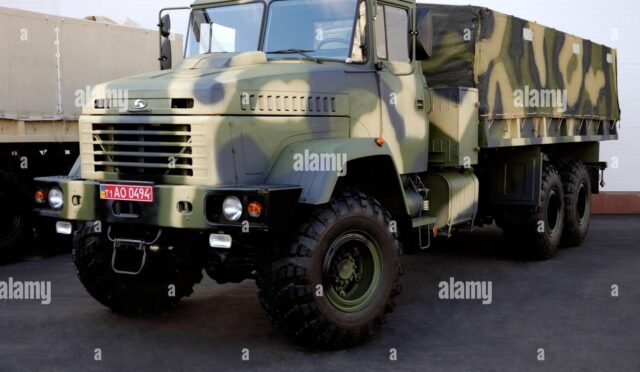FPV Drones: Enhancing Ukraine’s Military Tech Against EW
Ukraine’s Main Directorate of Defense Innovations has recently conducted tests on fiber-optic-controlled first-person view (FPV) drones. These advanced drones are specifically designed to bolster the country’s defenses against electronic interference and hacking attempts. The demonstration featured over a dozen unmanned aerial vehicles (UAVs) from various domestic manufacturers, with some models capable of carrying warheads weighing up to three kilograms (approximately 6.6 pounds). Experienced military UAV operators took part in the event to evaluate the tactical and technical specifications of these drones for potential use on the battlefield.
One of the standout features of fiber-optic-guided UAVs is their reliance on cables for data transmission, as opposed to the traditional drones that depend on vulnerable radio signals. This innovative approach ensures a more secure and stable connection, making these drones less susceptible to electronic warfare (EW) attacks. Lieutenant Colonel Yevhenii Tkachenko, the head of the directorate’s Unmanned Aviation Systems, emphasized the importance of countering Russia’s advancements in drone technology, stating, “Russia continues to enhance its capabilities in leveraging fiber-optic-controlled drone technologies, so it is vital to counteract its advantages in this area.”
Russia’s Electronic Warfare Tactics
Russia has implemented a diverse range of electronic warfare tactics in Ukraine, including jamming and hacking, aiming to disrupt vital communications and drone operations. British military analysts have warned that Russian jamming techniques have become so sophisticated that even guided weapons have struggled to accurately hit their targets. Reports have also surfaced indicating that the US-made High Mobility Artillery Rocket System (HIMARS), provided to Ukraine, became “completely ineffective” at one point due to Russia’s advanced EW capabilities.
In response to these escalating threats, NATO has initiated plans to enhance intelligence-sharing with Ukraine to combat Moscow’s growing electronic warfare strategies. Additionally, the US Air Force has focused on upgrading F-16 fighter jets designated for Ukraine, improving their capabilities to operate effectively in EW environments. This collective effort aims to equip Ukraine with the necessary tools to counteract Russian technological advantages.
The necessity for unjammable drones forms a core component of Ukraine’s broader “Army of the Future” initiative. This program is dedicated to integrating cutting-edge technologies into the military framework, enabling the formation of a robust “army of drones” and a corresponding “army of robots”. Such advancements are imperative for maintaining a strategic edge over adversaries.
The Role of Advanced Drone Technology
Ihor Yu, a veteran UAV operator in the Ukrainian military, underscored the significant impact of these advanced drone technologies on military operations. He noted that while the technology itself may not be entirely new, its application in modern warfare is highly effective, particularly against active enemy electronic countermeasures. “Despite certain operational challenges, these drones are crucial for successfully completing specialized tasks,” Yu remarked.
This emphasis on drone technology reflects Ukraine’s commitment to enhancing military efficiency and increasing the likelihood of mission success. As the conflict continues, the integration of such innovative systems is expected to play a pivotal role in shaping the future of military engagements, enabling Ukraine to adapt to the evolving landscape of warfare.







